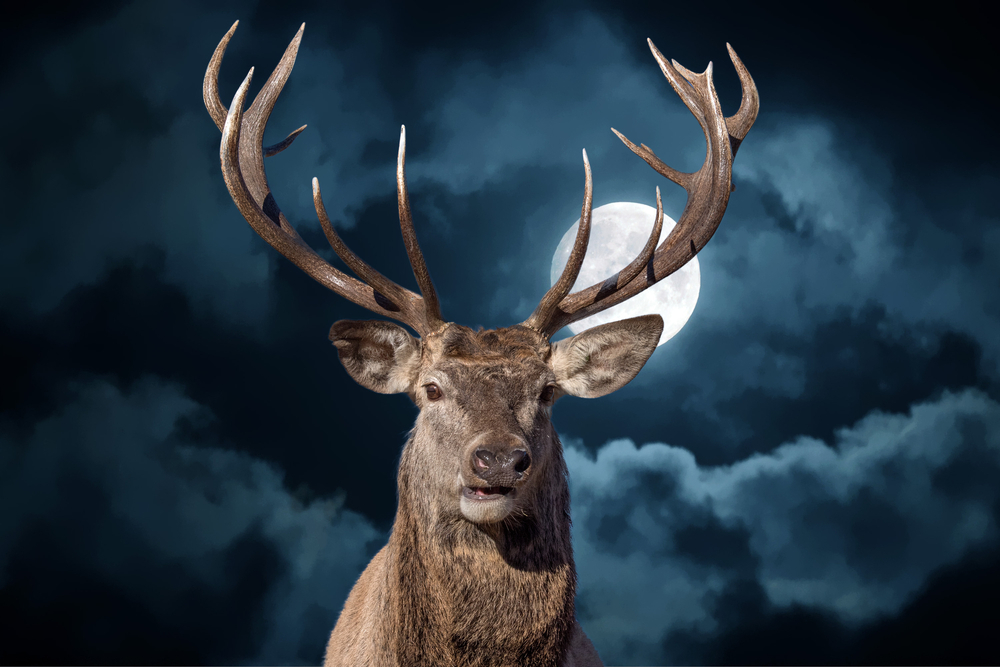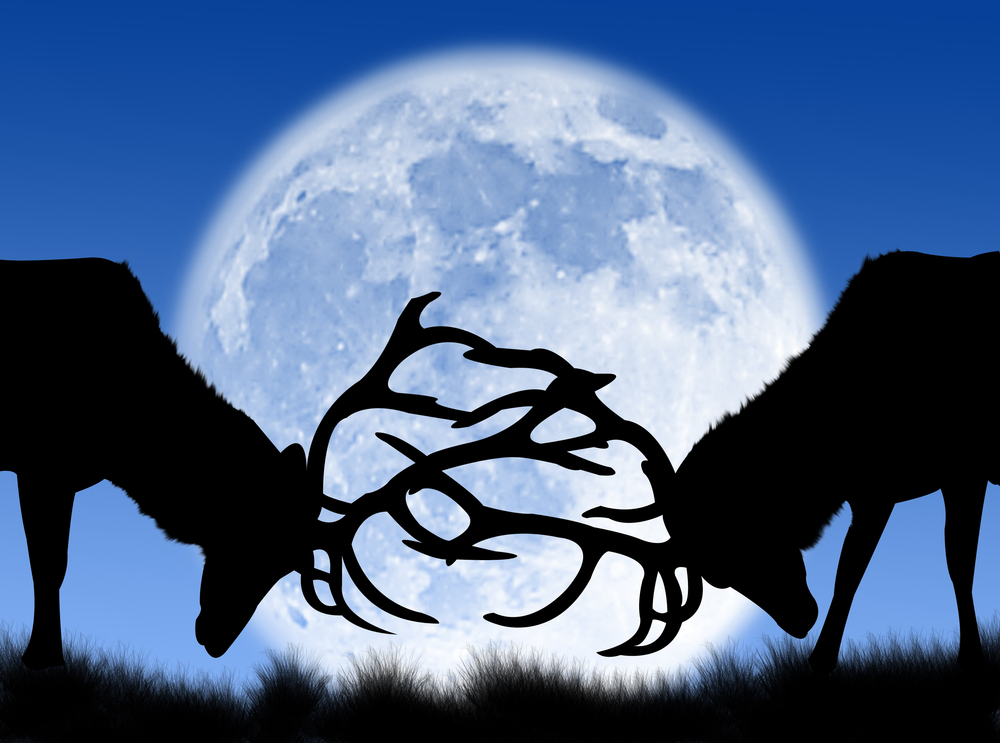What Is A Buck Moon?
The celestial sphere has long fascinated humanity, with its mesmerizing display of celestial bodies. Among the many wonders of the night sky, the Buck Moon stands out as one of the most intriguing phenomena. What is a buck moon? The full moon that rises in July is known as the "Buck Moon."
Author:Evelyn AdamsReviewer:Mia ThompsonSep 01, 202322.1K Shares307.3K Views

The celestial sphere has long fascinated humanity, with its mesmerizing display of celestial bodies. Among the many wonders of the night sky, the Buck Moon stands out as one of the most intriguing phenomena. What is a buck moon? The full moon that rises in July is known as the "Buck Moon."
All 13 full moons have names derived from Native American customs of season tracking, notably those of the Algonquin tribes. These customs assisted people in remembering what to anticipate from the current season and how to be ready for the next one.
The term "Buck Moon" refers to the month of July, when bucks (male deer) have their largest antlers before shedding them and beginning the process of new antler growth.
The full moon in July is known by a variety of other names in North America, including the Berry Moon, the Thunder Moon, the Salmon Moon, the Herb Moon, and the Mead Moon.
All of these names refer to regular thunderstorms, an abundance of wild berries, and salmon returning after the spawning season, which are all seasonal occurrences in July.
This article seeks to delve into the captivating world of the Buck Moon, exploring its origin, significance, and cultural relevance. As we journey through the cosmos, we will discover the science behind this lunar event and its connections to ancient cultures and modern traditions.
What Is A Buck Moon?
The time of year when a buck's antlers are growing earned the Buck Moon its name. Around four or five months old, young male deer start to develop pedicles. Pedicles, often called "button bucks," are tiny, hairy lumps that form the foundation of the antler.
A buck will begin to develop genuine antlers from the pedicle after it reaches maturity at roughly one year old. Every year, all male deer go through a cycle where they lose their antlers in the spring and grow them again in the summer.
As the new antlers begin to protrude from the forehead, they are covered in silky hair. While mature adults can grow their antlers quicker, at around 1 1/2 inches per week, young males can only develop their antlers at a pace of about 3/4 inches per week. The bucks' antlers had partly grown by the time of July's full moon.
By the end of the summer, the velvety covering on the antlers has dried up and fallen off. For the autumn mating season, when males are vying for females, the stiffened antlers are crucial.
The hay and raspberry harvests, the salmon migration, and a period of intense thunderstorms fuelled by July heat and humidity are all to blame for the many titles for the Full Buck Moon.
The Science Behind The Buck Moon
The lunar cycle, which spans approximately 29.5 days, encompasses various phases of the moon, with the full moon being one of the most prominent. During this phase, the moon is fully illuminated as seen from Earth because it aligns with the sun and the Earth, with the Earth in the middle. This alignment causes the moon to appear in its full glory, casting a radiant glow upon our planet.
As the Buck Moon appears during July, it often coincides with the Earth being at its farthest distance from the sun, known as aphelion. Consequently, this full moon may appear slightly smaller than some other full moons throughout the year, an effect known as the "apogee moon." Despite its relatively smaller size, the Buck Moon is no less enchanting, captivating stargazers with its shimmering beauty.
Throughout history, the moon has held deep cultural significance for various societies. Ancient civilizations, such as the Native Americans and many indigenous cultures, closely observed the lunar cycles, attributing spiritual and agricultural meanings to each full moon. The Buck Moon, in particular, played a vital role in their lives.
For Native American tribes, the Buck Moon marked the time to commence deer hunting, as it coincided with the period when bucks' antlers were most prominent.
These hunts provided tribes with a crucial source of food and resources, ensuring their survival through the coming months. As such, the Buck Moon was a symbol of sustenance and preparation for the challenges that lie ahead.
Buck Moon's Spiritual Meaning
The Buck Moon denotes a period of personal development. When you consider the meaning of development and maturity that bucks convey with their antlers, it makes sense.
The Buck Moon causes an energy rush. The summer is still in full swing, with bright, sunny days, blossoming flowers, and the impending harvest, despite the fact that the days are already beginning to become shorter. Fruits and veggies from the garden are being harvested for our dinners.
The full Buck Moon also serves as a reminder to let go of things in order to create space for all of the new development in the midst of all of this climatic energy, which may seem overwhelming.
When setting your objectives, think about everything that could be hurting you or impeding your progress. What prevents you from thriving? What prevents you from being creative? What has to be added to or taken away from your life for it to be successful?
What Does The Buck Moon Mean For Zodiac Signs?
Aries (March 20 - April 19)
According to Kiss, this is the month to examine particularly closely your life's work and your own priorities. According to her, "This moon will really make you consider whether you're in the right job and whether it is actually serving your purpose." You could even have a larger sense of obligation toward your job or a sense that you have more of it. This could also include realizing that your current position isn't the best one for you and that you need to make a shift.
Taurus (April 20 - May 20)
This month, get out and learn something new. There are several ways to explore the vast universe that is just under your feet. "Consider travel, education, writing, coaching, or publishing," Kiss utters.
Gemini (May 21 - June 20)
While you may have a tendency to just look at the surface of things, try doing the opposite this month. Think about one subject that interests you or that your curiosity remains piqued about, advises Kiss. "Continue that and dig deeper."
Cancer (June 21 - July 22)
Spend this month giving your relationships all of your attention. Is there a romantic or non-romantic relationship in your life that you feel might need some more attention or that you'd like to grow? This full moon will help you build relationships and trust with the people you feel safest around, according to Kiss.
Leo (July 23 - Aug. 22)
Even though this month is all about giving to others, you must also remember to look after your own mind, body, and soul. "Your self-care and health will also be illuminated, because how can you help others if you don't have a routine established for yourself?" Asks Kiss.
Virgo (Aug. 23 - Sept. 22)
Although Virgo may not have an easy month, you can and will get through it. With respect to your inner child, this full moon "might bring up an old wound from the past," warns Kiss. The best way to channel that energy is through genuine self-expression and engaging in an activity that made you really happy as a youngster.
Libra (Sept. 23 - Oct. 22)
If you discover that you desire to be alone this month, don't be shocked. During this full moon, "Make sure you have a safe space to perhaps hideaway," advises Kiss. You could experience this season as being more reserved.
Scorpio (Oct. 23 - Nov. 21)
However, for Scorpio, this is an extraverted month. According to Kiss, Scorpios will yearn for company, particularly during the buck moon. "You're going to feel a need for a connection somewhere," continued Kiss.
Sagittarius (Nov. 22 - Dec. 21)
It will make you feel more connected to this global energy if you do things more slowly during this full moon and focus on the present moment with all of your senses, according to Kiss. Lean into this month's tendency toward reflection.
Capricorn (Dec. 22 - Jan. 19)
It just seems logical that Capricornians would experience things at a higher level this month because the buck moon is in their sign. According to Kiss, "themes around your identity and purpose will come through," adding that the moon will support your sense of authenticity.
Aquarius (Jan. 20 - Feb. 18)
The moment has come if you've been feeling the desire to withdraw and concentrate on yourself. This month, your first goal should be healing. Allow yourself to tune out of reality as often as necessary so that you can digest things, advises Kiss. "This moon may bring up some closure or endings for you."
Pisces (Feb. 19 - March 20)
This month, evaluate every connection you have and let go of those that don't serve you or make you happy. "Look at who you align yourself with and any organizations you belong to," adds Kiss. Ensure that everyone is on the same page and understands that it's okay to let go of anything that isn't functioning anymore.
Buck Moon Ritual Ideas For A Solitary Witch

Full Moon Manifestation ritual. 3July 2023
The full moon in July is the best time to manufacture moon water and charge your crystal collection because of the abundance and uplifting energy of the Buck Moon.
Try to spend time outdoors in nature if the weather is pleasant. Watch the Buck Moon rise while you feel the grass between your toes. Touchstones, delve your fingers into the ground and let the aroma wash over you.
Take note of the activity going on around you. Slowly inhale and let your body adjust to the rhythm of nature. As your body transfers electrons via direct skin-to-earth contact, earthing, also known as grounding, has real health advantages.
You may gather flowers and make little wreaths out of grass if you need to occupy your hands. Pay attention to the noises in your garden. This is a great time to keep a diary since everything is flowering, developing, and manifesting.
How far along are you with your objectives? Are you making progress, or do you need to go out of your comfort zone even more? Prepare those actions. Let the Buck Moon be a reminder to concentrate on your own development.
In the midst of the summer, this moon may sometimes seem hectic; if this is the case, take some time to meditate, clear your head, and turn your attention within. You may get your bearings by using runes, tarot, or oracle cards.
If you need more assistance unwinding, consider taking a ceremonial bath. Keep in mind that the way you see the full moon is entirely up to you and depends on your schedule. There is no right or wrong approach; just follow your instincts.
People Also Ask
Why Is It Called A Buck Moon?
It is called a Buck Moon because it coincides with the time when buck deer grow new antlers, making them more visible.
How Does The Buck Moon Differ From Other Full Moons?
The Buck Moon appears during July and often coincides with the Earth being at its farthest distance from the sun, making it slightly smaller than some other full moons.
What Cultural Significance Does The Buck Moon Hold For Native American Tribes?
The Buck Moon marked the time for Native American tribes to commence deer hunting, as it coincided with the period when bucks' antlers were most prominent.
What Is One Of The Myths Surrounding The Buck Moon In European Folklore?
According to European folklore, the Buck Moon is associated with a time of transformation, and those who bask in its glow during this phase gain the ability to shape-shift into deer.
How Do Modern Celebrations Of The Buck Moon Differ From Ancient Traditions?
Modern celebrations often involve moonlit feasts, music, dance, and rituals to honor the moon's presence, while ancient traditions focused on hunting and spiritual connections with nature.
Conclusion
I hope now you understand what is a buck moon. The Buck Moon, also known as the July full moon, holds a fascinating blend of scientific marvel and cultural significance. Named for its association with buck deer and their growing antlers, this celestial event captures the imagination of stargazers worldwide. Its appearance during July, often coinciding with Earth's farthest distance from the sun, adds to its uniqueness.
Throughout history, various cultures, including Native American tribes, have revered the Buck Moon for its spiritual and agricultural meanings. Today, the Buck Moon continues to inspire celebrations, rituals, and spiritual practices, bridging the gap between ancient traditions and modern festivities.
As we gaze upon this luminous orb in the night sky, we are reminded of the vastness and beauty of the universe, and the enduring allure of the Buck Moon endures through time.

Evelyn Adams
Author
Evelyn Adams is a dedicated writer at Kansas Press, with a passion for exploring the mystical and uncovering hidden meanings.
Evelyn brings a wealth of knowledge and expertise to her insightful articles. Her work reflects a commitment to providing accurate information, thoughtful analyses, and engaging narratives that empower readers to delve into the mysteries of the universe.
Through her contributions, Evelyn aims to inspire curiosity, spark imagination, and foster a deeper understanding of the supernatural world.

Mia Thompson
Reviewer
Mia Thompson is a versatile writer at Kansas Press, delving into a range of topics including news, spiritual exploration, astrology, and numerology. With a passion for delivering insightful and informative content, Mia's articles provide readers with valuable perspectives and thought-provoking insights into these intriguing subjects.
She is dedicated to creating content that resonates with readers and fosters a deeper understanding of complex topics.
Latest Articles
Popular Articles

